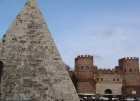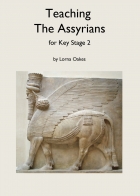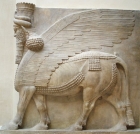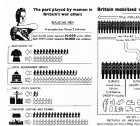Sumer & Mesopotamia
Where is Sumer? Why is it important? The Ancient Sumerians are said to have founded the first urban civilisation in southern Mesopotamia (modern Iraq and Kuwait) and provide some of the earliest examples of writing and trade. In this section you will find podcasts, articles and resources to develop your knowledge of this ancient civilisation.
-

Ancient Sumer: the cradle of civilisation
ArticleClick to view -

‘Miss, did the Romans build pyramids?’
ArticleClick to view -

Scheme of Work: Comparing Ancient Civilisations
ArticleClick to view -

Scheme of Work: Ancient Sumer
ArticleClick to view -

So was everyone an ancient Egyptian?
ArticleClick to view -

Ancient Sumer
ArticleClick to view -

Teaching the Assyrians for KS2
ArticleClick to view -

Mesopotamia: Making a picture of Mesopotamia in our heads
ArticleClick to view -

Diagrams in History
ArticleClick to view -

Sumerian history through story-telling and expressive movement
ArticleClick to view

